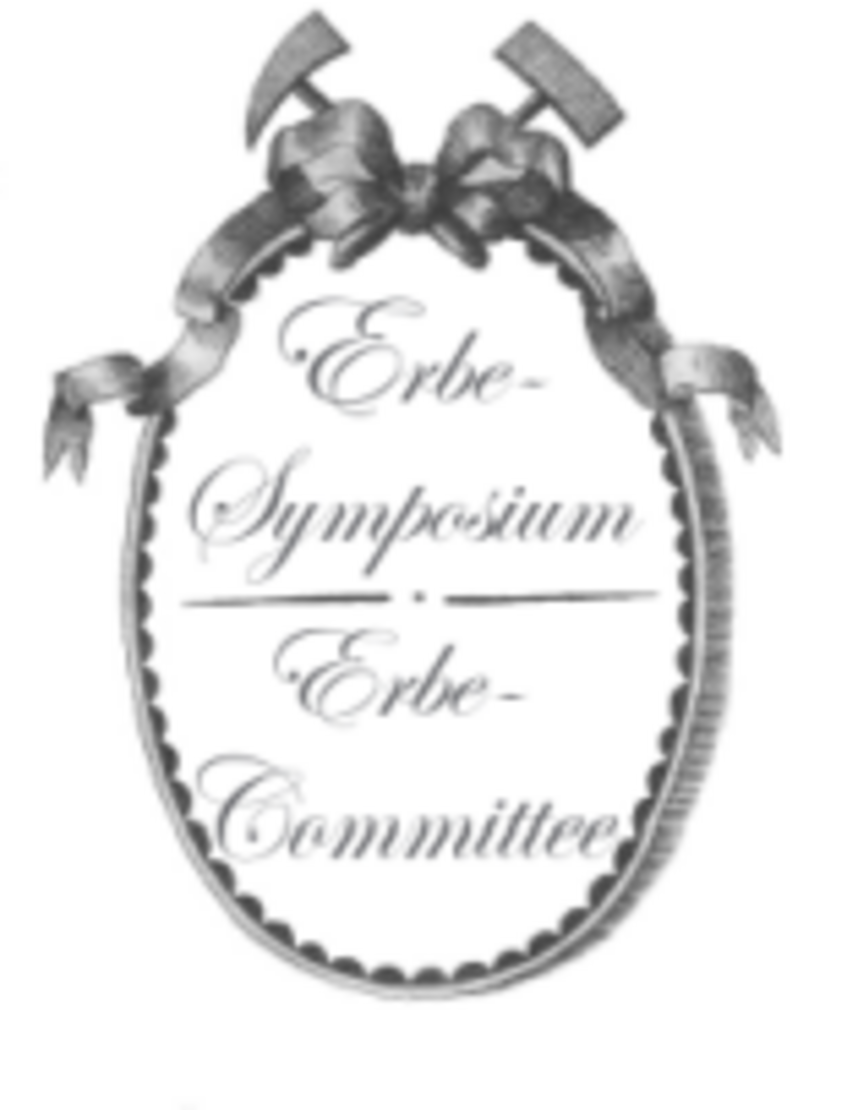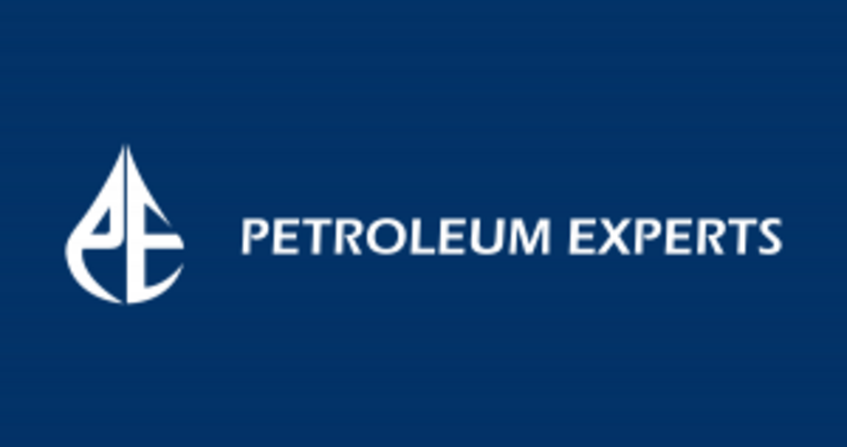News
AAPG Foundation Grants-in-Aid Award 2022 for Fatemeh Nazari

Fatemeh Nazari Vanani, a PhD student supervised by Prof. Bernhard Grasemann, Dr. Oscar Fernandez and Dr. Martin Schöpfer, has been selected to receive a $3,000 USD grant from the 2022 American Association of Petroleum Geologists Foundation Grant-in-Aid Program.
This grant will be used to sample fracture data from outcrops in the Sarsina area in Italy to characterize fracture properties and investigate sampling representativity in naturally fractured rocks using DFN modelling and statistical data analysis.
15. ERBE-Symposium 2021
Das Organisationsteam des 15. ERBE-Symposiums 2021 (13. bis 19. Juni 2021 in Eggenburg), Margret HAMILTON und Christoph HAUSER, hat für die erfolgreiche Organisation eines internationalen Symposiums zu Kulturerbe in Geowissenschaften, Bergbau und Metallurgie den Wissenschaftspreis 2021 des Landes Niederösterreich erhalten.
Auf diesem geohistorischen Symposium hat Margret Hamilton gemeinsam mit Studierenden aus ihrer Vorlesung Forschungsergebnisse an geowissenschaftlichen Objekten und Dokumenten aus dem Geologischen Archiv der Universität Wien präsentiert.
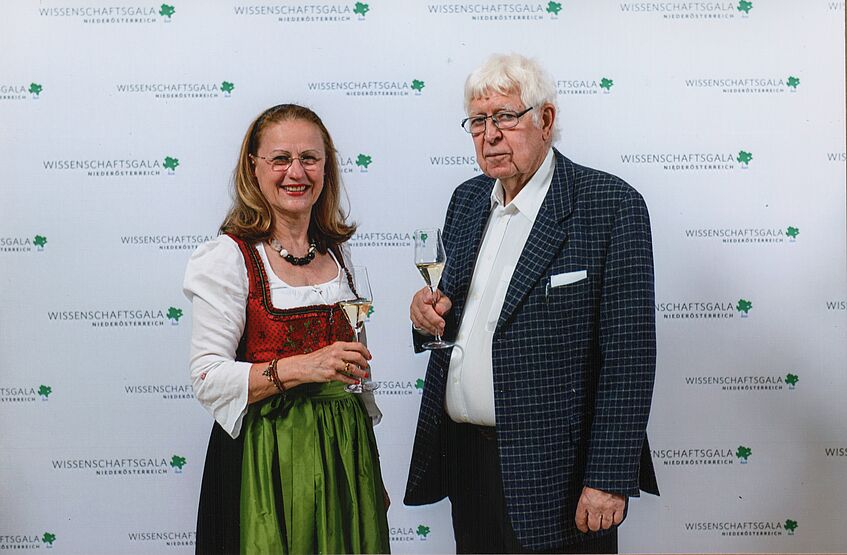
Margret Hamilton (li.) und Christoph Hauser (re.) (© priv.)
Geohistorical research based on original documents in the Geological Archive of the University of Vienna
Hamilton, M., Nagl, P., Heninger, M., Herzog, T., Oppenauer, L., Pirkner, W., Schweigl, L., Steckholzer, G. & Steinfeld, A., 2021, Proceedings: 15th International ERBE-Symposium : cultural heritage in geosiences, mining and metallurgy : libraries - archives - collections - Eggenburg, Austria, 13th-20th June 2020 → 2021: 15. Internationales Erbe-Symposium : das Kulturelle Erbe in den Geowissenschaften, Montanwissenschaften und Metallurgie - Bibliotheken, Archive, Sammlungen - Eggenburg, Österreich, 13.-20. Juni 2020 → 2021.
Eggenburg: Internationales ERBE-Symposium, S. 80-82 (Publications of the Erbe-Symposium, Band 2).
Geohistorische Forschungen anhand von Originaldokumenten im Geologischen Archiv der Universität Wien
Peter Nagl (Autor*in), Marianne Heninger (Autor*in), Thomas Herzog (Autor*in), Lisa Oppenauer (Autor*in), Wolfgang Pirkner (Autor*in), Lukas Schweigl (Autor*in), Gloria Steckholzer (Autor*in), Annette Steinfeld (Autor*in) & Margret Hamilton (Autor*in) 14 Jun 2021 → 18 Jun 2021
The collections of the Geological Archive of the University of Vienna. - Organizing and digitizing of geological heritage
Hamilton, M., 2021, Proceedings: 15th International ERBE-Symposium : cultural heritage in geosiences, mining and metallurgy : libraries - archives - collections - Eggenburg, Austria, 13th-20th June 2020 → 2021: 15. Internationales Erbe-Symposium : das Kulturelle Erbe in den Geowissenschaften, Montanwissenschaften und Metallurgie - Bibliotheken, Archive, Sammlungen - Eggenburg, Österreich, 13.-20. Juni 2020 → 2021
Eggenburg: Internationales ERBE-Symposium, S. 70-71 (Publications of the Erbe-Symposium, Band 2).
In the recent volume of Geology (March, Volume 49/3, 2021) there are two papers of the Department of Geology published.
The first paper (Le Heron, Busfield, Kettler: Ice-rafted dropstones in “postglacial” Cryogenian cap carbonates) investigates dropstones from Namibia and concludes that evidence for vestigial glaciation concomitant with cap carbonate deposition merits a reappraisal of the depositional conditions of cap carbonates and their paleoclimatic significance.
The second paper (Fernandez, Habermüller, Grasemann: Hooked on salt: Rethinking Alpine tectonics in Hallstatt (Eastern Alps, Austria)) demonstrated that spectacular halokinetic sequences in Triassic platform carbonates suggest that the Hallstatt diapir grew passively during the Triassic, surrounded by carbonate platforms, and extruded to the seabed during the Jurassic.
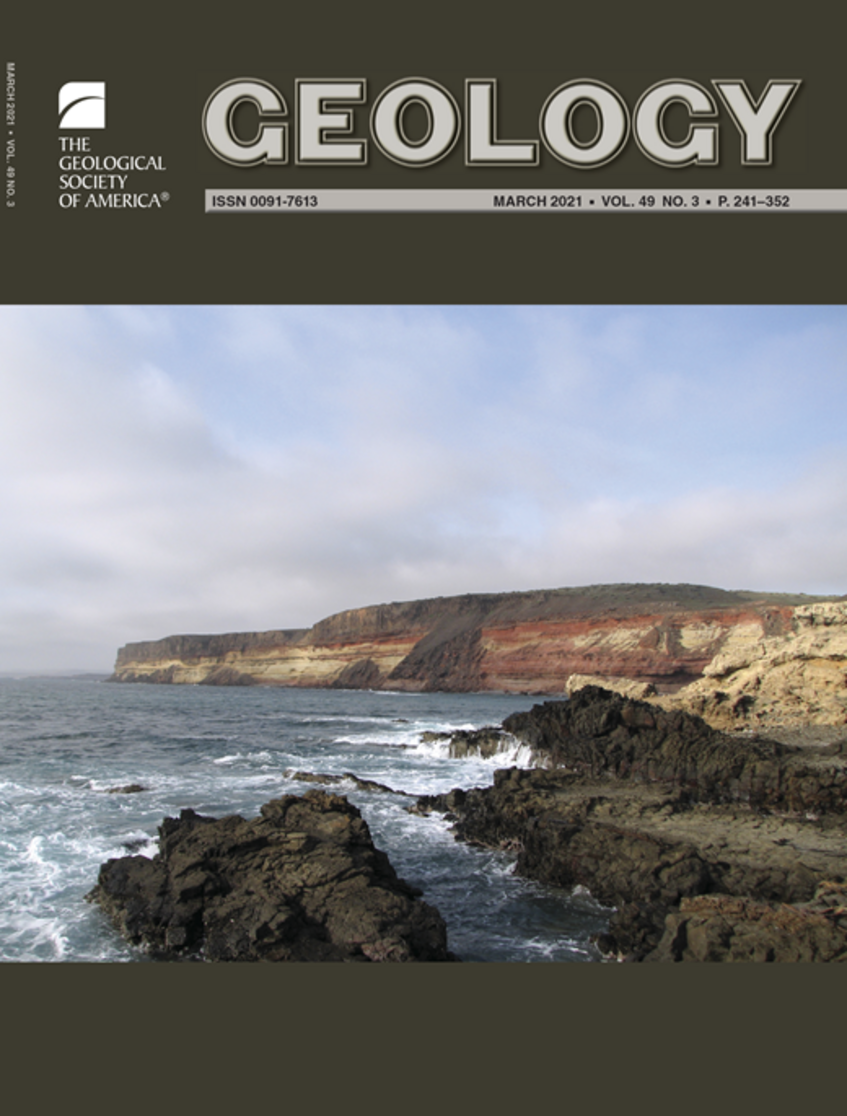
Geology (March, Volume 49/3, 2021)
Object of the Month (The Collections at Vienna University)
The new Object of the Month April 2020 is from the Geological Archive of the Department of Geology:
(Link: https://bibliothek.univie.ac.at/...)
The geologic overview map of the Eastern Alps by Leopold Kober is a preliminary version of his view of the tectonic architecture of the Alps and the Dinarides, which was strongly influenced by the early ideas of nappe tectonics.
A strongly modified version of this map was later published in KOBER, L. (1938). Der Geologische Aufbau Österreichs. Wien, Julius Springer: 204 pp.
New YouTube Lecture by Bernhard Grasemann and Marcin Dabrowski
This lecture was part of a three-day workshop organized under by the IUGS commission on Tectonics & Structural Geology (TecTask) at the Indian Institute of Technology (IIT) Kharagpur from 26-28 February 2020.
The topic of the workshop was “STRUCTURAL GEOLOGY IN THE 21st CENTURY”
(Link: https://erp.iitkgp.ac.in/CEP/getbrochure.htm?course_code=3263).
The lecture (Mis-)interpretations of kinematic indicators demonstrates with many natural examples and numerical models the danger of the interpretation of monoclinic symmetries, without considering the influence of mechanical of perturbations during deformation.
(Link: https://www.youtube.com/watch?v=-HWL--cOT5w).
New Springer book co-edited by Bernhard Grasemann
Structural Geometry of Mobile Belts of the Indian Subcontinent
Editors: Biswal, Tapas Kumar; Ray, Sumit Kumar; Grasemann, Bernhard
This book is part of the “Society of Earth Scientists Series” of Springer and was edited in the frame of the 36th International Geological Congress in Delhi rescheduled for the 9-14 November, 2020.
The book summarizes with 11 individual research papers the latest research on the structural geology of the mobile belts of the Indian subcontinent including the Himalayas, NE Himalayas, Bangladesh thrust belt, Andaman subduction zone, the Aravalli‐Delhi, the Central India Tectonic Zone, the Singhbhum, the Eastern Ghats and the Southern granulite terrane.
Neue Publikation in "Economic Geology"
Tschegg, C., A. H. N. Rice, B. Grasemann, E. Matiasek, P. Kobulej, M. Dzivák, and T. Berger (2019)
Petrogenesis of a Large-Scale Miocene Zeolite Tuff in the Eastern Slovak Republic: The Nižný Hrabovec Open-Pit Clinoptilolite Mine, Economic Geology, 114(6), 1177-1194.
Over 170,000 metric tonnes of high-grade clinoptilolite tuff were extracted from the open-pit mine in Nižný Hrabovec (eastern Slovak Republic) in 2018, making it one of the world’s major natural clinoptilolite producers.
The mine is hosted in a Miocene volcanogenic-sedimentary deposit in the East Slovak basin, with estimated 150 million tonnes of clinoptilolite tuff—the economically most important reserve in the European Union.
This work as part of the collaboration between the Department of Geodynamics and Sedimentology (University of Vienna) and Glock Health, Science and Research GmbH investigates the magma source, crustal contributions, deposition environment and postdepositional geochemical changes of this important clinoptilolite tuff deposits.

Figure 1 of this paper has been selected as cover page of this issue of Economic Geology.
New Publication in "Tectonophysics"
Present-day kinematic behavior of active faults in the Eastern Alps
Baroň, I., Plan, L., Sokol, L., Grasemann, B., Melichar, R., Mitrovic, I., Stemberk, J., 2019. Present-day kinematic behaviour of active faults in the Eastern Alps. Tectonophysics 752, 1-23.
We monitored fault systems in caves in the Eastern Alps over a 1.5–2.5-year observation period by means of high-resolution three-dimensional Moiré extensometers TM71.
The annual displacement rates of the monitored faults were mostly about an order of magnitude smaller than the rates of the entire crustal wedges revealed from GNSS.
The displacements could be attributed to various processes: Dilations and compressions were mostly associated with thermal-volumetric variations.
Normal dip-slips originated due to gravitational relaxation.
Displacements with the same kinematics as the geologically documented fault systems were attributed to tectonic creep and strain built-up during the inter-seismic period.
Opposing kinematics on these faults were usually recorded few days in advance to local earthquakes.
Therefore real-time of such displacements could be a step forward to an effective earthquake early warning.
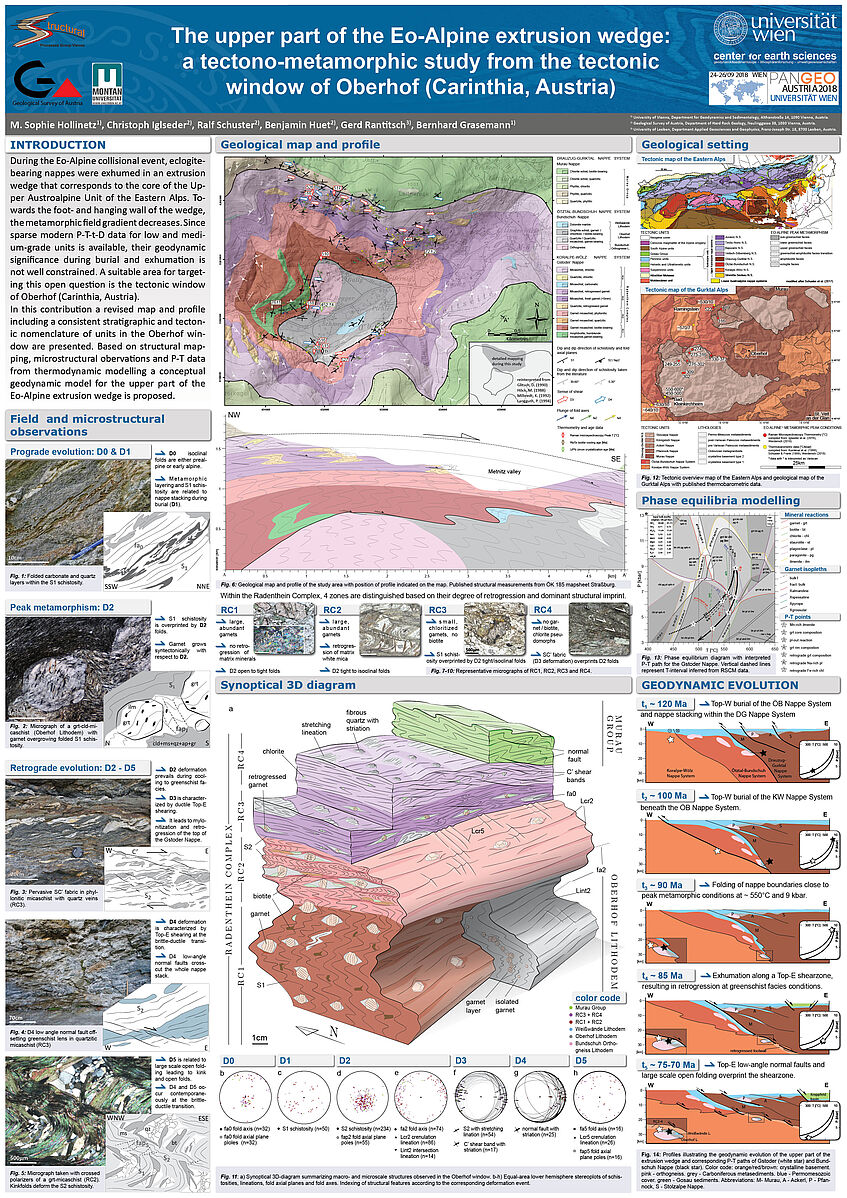
Poster "The upper part of the Eo-Alpine extrusion wedge: a tectono-metamorphic study from the tectonic window of Oberhof (Carinthia, Austria) (© S. Hollinetz)
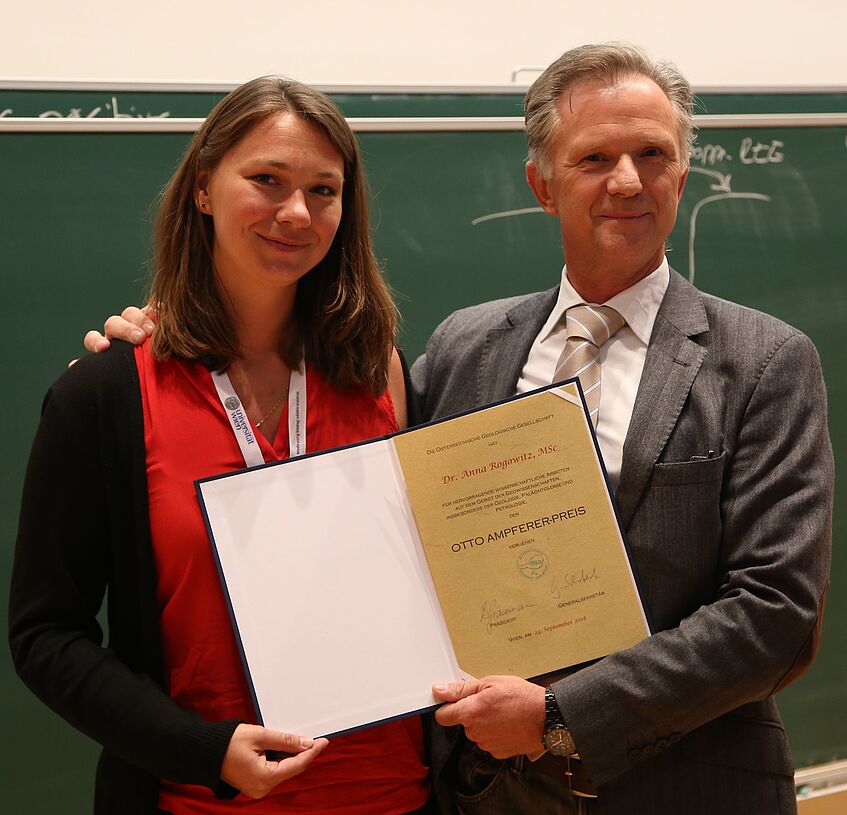
Der Otto Ampferer-Preis - Anna Rogowitz und Bernhard Grasemann (© B. Grasemann)

